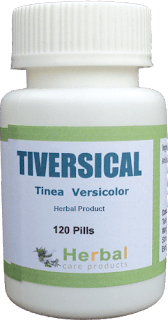11 Simple Home Remedies for Tinea Versicolor and Healthy Diet
What Is Tinea Versicolor?
A typical fungal skin infection is tinea versicolor. The fungus disrupts the skin's normal pigmentation, causing tiny, discoloured areas. These blotches typically affect the trunk and shoulders and might be paler or darker in colour than the surrounding skin.
The majority of cases of tinea versicolor (TIN-ee-uh vur-si-KUL-ur) are in adolescents and young adults. Tinea versicolor may become more obvious when exposed to the sun. Pityriasis versicolor, another name for tinea versicolor, is not unpleasant or contagious. However, it could result in anxiety or self-consciousness.
Tinea versicolor can be treated using antifungal creams, lotions, or shampoos. However, skin colour irregularity may continue for a few weeks or months even after a successful therapy. In particularly hot and muggy conditions, tinea versicolor frequently returns.
Home Remedies for Tinea Versicolor
1. Healthy Diet
To treat the infection and help stop further outbreaks, maintain a healthy and balanced diet. Skin health might deteriorate due to an immune system that is compromised, as in the case of tinea versicolor. Eat things that are rich in vitamins A, B, C, and E. Include yoghurt, kefir, and other probiotics in your diet on a regular basis. Consume fresh fruits and vegetables and drink enough water each day to wash out pollutants. Consuming too many carbs can lead to an excessive amount of yeast production.
2. Tea Tree Oil
Tea tree oil's potent antifungal properties are a popular Natural Treatment for Tinea Versicolor. Use this to treat any itching symptoms and stop the infection from spreading and maybe coming back.
One tablespoon of coconut oil or olive oil should be combined with a few drops of tea tree oil. Use a cotton ball or swab to apply the solution directly to the afflicted region. After it has dried, rinse it off and pat it dry with a fresh towel. Repeat each day for two weeks, twice.
3. Coconut Oil
The extra-virgin variety of coconut oil contains medium-chain fatty acids that fight against the fungus.
After applying coconut oil to the tinea versicolor rash, let it dry. After 15 to 20 minutes, rinse. The same procedure can also be used if you combine one tablespoon of coconut oil with five to six drops of cinnamon oil. Until you see benefits, perform either treatment two to three times each day.
4. Aloe Vera
Aloe vera is one of the best all-Herbal Remedies for Tinea Versicolor. The anti-inflammatory and anti-fungal properties of it could reduce the effects of the fungus. Aloe vera may also be employed to repair skin damage.
For two months, apply fresh aloe vera gel three times a day to the tinea versicolor area. One teaspoon of the gel can also be mixed with three drops of lavender oil.
5. Oregano Oil
Oregano essential oil can relieve any discomfort, itching, or suffering brought on by an attack of tinea versicolor. It might also aid in eradicating the infection. Use a cotton ball or swab to apply a mixture of oregano essential oil and extra virgin olive oil on the skin. Repeat the procedure after the 30-minute treatment every day for three weeks.
6. Turmeric
Antifungal, antibiotic, and antiseptic qualities of turmeric help to ward off infection and hasten the healing process. It might also aid in limiting the spread and recurrence of tinea versicolor.
Add three to four teaspoons of raw, unprocessed turmeric juice to a gallon of water. Apply the mixture to the skin after a shower or bath. Equal proportions of sandalwood powder and turmeric powder can be combined with a little water to create a paste that can be applied straight to the skin.
7. Indian Lilac
Neem, also known as Indian lilac, is a natural herb with antibacterial, antiseptic, and antifungal qualities. Use it to speed up healing since it might prevent the infection from spreading.
Boil two cups of water with Indian lilac leaves. After the water has boiled for ten minutes, drain it and then use the cooled water to wash the tinea versicolor spots. Repeat each day for three weeks two to three times. You can also make a paste by pulverising fresh Indian lilac leaves and adding water. Once the paste has dried, apply to the afflicted area and rinse. For another all-natural remedy, combine Indian lilac oil with a carrier oil like coconut oil or olive oil. For two to three weeks, do this twice each day.
8. Apple Cider Vinegar
Apple cider vinegar contains potent antibacterial properties that can heal illnesses and prevent them from coming back, in addition to being a pleasant culinary additive.
To create a healing remedy, combine apple cider vinegar and water in equal proportions. Put the solution immediately on the spots with a cotton ball or swab. After 15 minutes, rinse, and then repeat each day for three weeks. Two teaspoons of apple cider vinegar diluted in a glass of water can also be consumed. For three weeks, sip on this every day.
9. Baking Soda
Baking soda can be applied externally to the affected area to exfoliate any dead skin cells and is used orally to correct pH levels. Before taking a shower or bath, let the baking soda sit on Herbal Treatment For Tinea Versicolor blotches for 10 minutes. To carefully remove the baking soda, use a cleansing brush or exfoliator. Repeat each day until you see results.
10. Yogurt
Strong probiotics in plain yoghurt can effectively treat tinea versicolor. Consume two to three cups of unsweetened, plain yoghurt per day. By applying it directly to the affected area for 20 to 30 minutes before rinsing, you can also use it as a skin mask.
11. Garlic
Due to its anti-fungal properties, garlic can treat the underlying fungus that causes tinea versicolor. It might also make you feel less itchy.
Apply it directly to the areas as garlic oil or fresh garlic juice. Before taking your regular shower, it is preferable to let it sit on the skin for 20 minutes. For three weeks, keep doing this. You can chew on two to three cloves of garlic or consume bits of it if you like the flavour. Drink a glass of warm water after.
Herbal Supplement for Tinea Versicolor causes spots of white, brown, or pink discoloration on the extremities or chest, making it a visible skin disorder. The majority of cases show no further symptoms, while some may cause pain or an itching sensation. Despite how it may appear, this skin condition is not contagious and may be treated at home using natural methods. Treatment for the look of the skin also addresses the underlying cause of a fungal infection.





Comments
Post a Comment